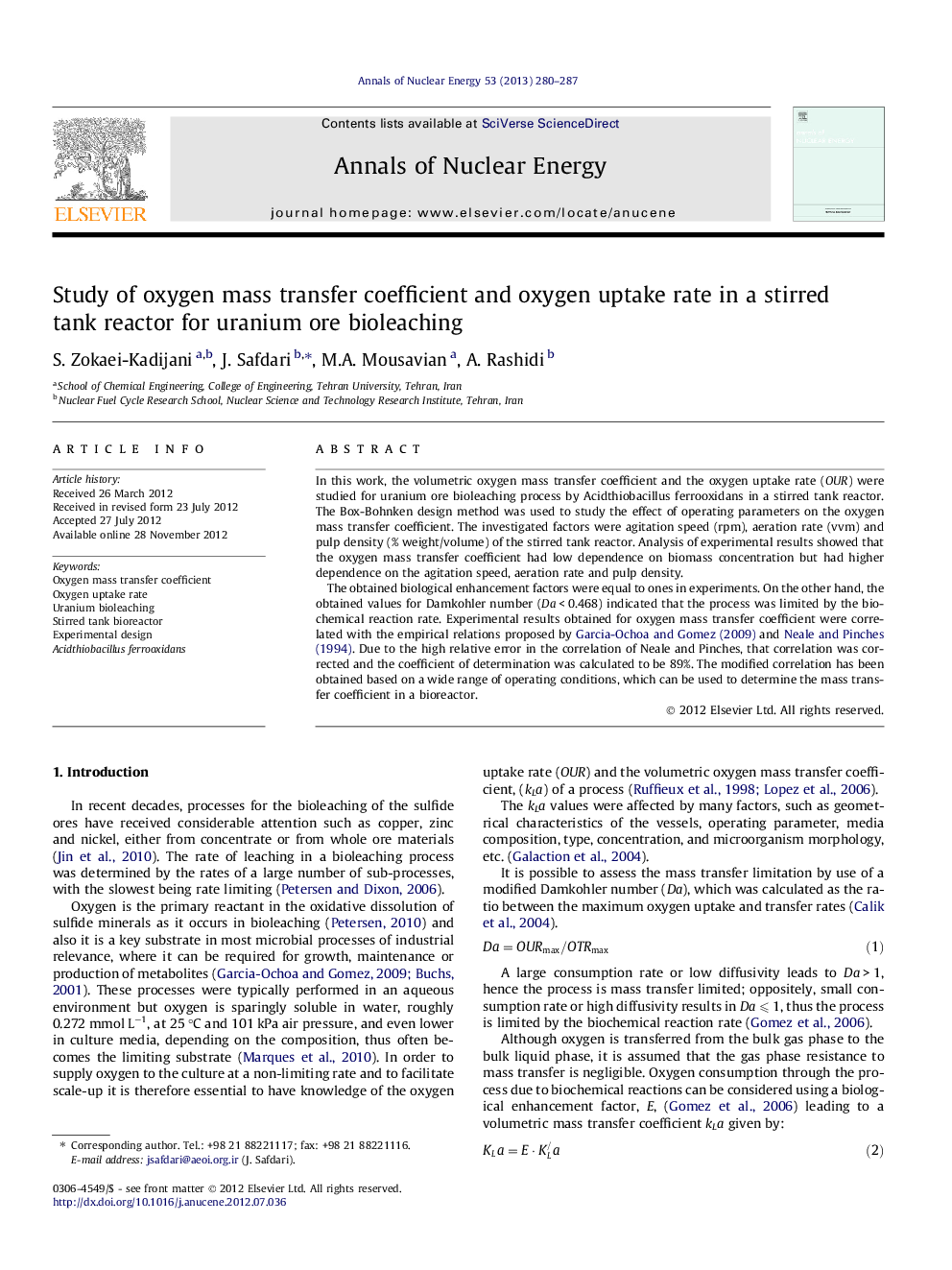| Article ID | Journal | Published Year | Pages | File Type |
|---|---|---|---|---|
| 1728772 | Annals of Nuclear Energy | 2013 | 8 Pages |
In this work, the volumetric oxygen mass transfer coefficient and the oxygen uptake rate (OUR) were studied for uranium ore bioleaching process by Acidthiobacillus ferrooxidans in a stirred tank reactor. The Box-Bohnken design method was used to study the effect of operating parameters on the oxygen mass transfer coefficient. The investigated factors were agitation speed (rpm), aeration rate (vvm) and pulp density (% weight/volume) of the stirred tank reactor. Analysis of experimental results showed that the oxygen mass transfer coefficient had low dependence on biomass concentration but had higher dependence on the agitation speed, aeration rate and pulp density.The obtained biological enhancement factors were equal to ones in experiments. On the other hand, the obtained values for Damkohler number (Da < 0.468) indicated that the process was limited by the biochemical reaction rate. Experimental results obtained for oxygen mass transfer coefficient were correlated with the empirical relations proposed by Garcia-Ochoa and Gomez (2009) and Neale and Pinches (1994). Due to the high relative error in the correlation of Neale and Pinches, that correlation was corrected and the coefficient of determination was calculated to be 89%. The modified correlation has been obtained based on a wide range of operating conditions, which can be used to determine the mass transfer coefficient in a bioreactor.
► Mass transfer coefficient does not depend on biomass concentration. ► The pulp density has a negative effect on mass transfer coefficient. ► The pulp density is the unique factor that affects maximum OUR. ► In this work, Neale’s correlation is corrected for prediction of mass transfer coefficient. ► Biochemical reaction is a limiting factor in the uranium bioleaching process.
